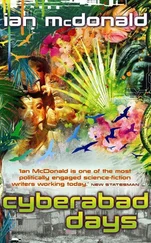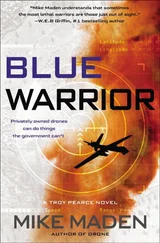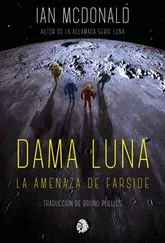Shock number one came on the first Kennedy morning as she sat on her verandah with the ocean view and the maid poured coffee. That was when she realised that Dr. Lisa Durnau, Evolutionary Biologist, had been vanished by her own state. She had been unsurprised to learn from the woman in the suit that she was to be sent into space. The State Department did not fly people down to Kennedy in a hypersonic shuttle to study the bird life. When they confiscated her palmer and gave her a lookie-no-talkie model it had been a displeasure but not a shock. Startlement but no shock to find the hotel had been cleared for her. The gym, the pool, the laundry. All for her, alone. Lisa felt good Presbyterian guilt about calling room service until the Nicaraguan maid told her it gave her something to do. That is, the maid said she came from Nicaragua. She poured the coffee and in that same moment of vertiginous paranoia came the second shock: Lull had vanished, too. Lisa had never thought it anything other than a reaction to his marriage disintegrating.
At their next meeting Lisa Durnau confronted Suit Woman, whose name was Suarez-Martin, pronounced the Hispanic way.
“I have to know,” said Lisa Durnau, shifting her weight from foot to foot, unconsciously recapitulating her warm-up routine. “Was this what happened to Thomas Lull?”
The government woman Suarez-Martin kept the executive suite as her office. She sat with her back to the panoramic of rockets and pelicans.
“I don’t know. His disappearance was nothing to do with the United States government. You do have my word on that.”
Lisa Durnau chewed the answer over a couple of times. “Okay then, why me? What’s this about?”
“I can answer that first part.”
“Shoot then.”
“We got you because we could not get him.”
“And the second part?”
“That will be answered, but not here.” She slid a plastic bag across the desk to Lisa. “You’ll need this.”
The bag was marked with NASA logos and contained one standard issue one-size-fits-all flight-suit liner in hi-visibility yellow.
When next she saw Suarez-Martin the G-woman was not wearing her suit. She lay strapped into the acceleration couch on Lisa Durnau’s right with hints of NASA yellow peeking through her flight gear at wrists and throat. Her eyes were closed and her lips formed silent prayers, but Lisa had the idea that these were the rituals of familiar terror rather than stark novelty. Airport rosaries.
The pilot occupied the couch on the left. He was busy with pre-flight checks and communications and treated Lisa as he would any other cargo. She shifted on her couch and felt the gel flow and conform to her body contours, a disturbingly intimate sensation. Beneath her, down in the launch pit, a thirty-terawatt laser was charging, focusing its beam on a parabolic mirror underneath her ass. I am about to be blasted into space on the end of a beam of light hotter than the sun, she thought, marvelling at the cool with which she could contemplate this insane notion. Perhaps it was sell-defensive disbelief. Perhaps the Nicaraguan maid had slipped something in the coffee. While Lisa Durnau was trying to decide the count hit zero. A computer in Kennedy flight control fired the big laser. The air ignited under Lisa and kicked the NASA lightbody orbitwards at three gravities. Two minutes into flight a thought so ridiculous, so absurd hit her that she could not help giggling, sending laughter ripples through her gel bed. Hey ma! Top of the world. The most exclusive travel lounge on the planet, the Five-Hundred-Mile-High Club! And all this in something that looks like a designer orange squeezer.
It was there that the third shock crept up and mugged her. It was the realisation of how few people would ever miss her.
The ident patch on the yellow suit liner reads Daley Suarez-Martin. The G-woman is one of those people who will set up office anywhere, even in a cubby full of film-wrap astronaut food. Palmer, water bottle, television patch, and family photos are velcroed in an arc on the wall: three generations of Suarez-Martins arrayed on a big house porch with palms in large terracotta pots. The TV patch is set to timer and tells Lisa Durnau she’s at 01.15 GMT. She does a subtraction. She’d be at Tacorofico Superica with the Wednesday night gang on her third Margarita.
“How are you settling in?” Daley Suarez-Martin asks.
“It’s, uh, it’s okay. Really.” Lisa still has a small back-of-skull headache, like you get the first few times you use a lighthoek. She suspects it’s the ash of the launch trauma drugs she hasn’t run out of her system in the rat wheel. And zero-gee leaves her feeling horridly exposed. She doesn’t know what to do with her hands. Her breasts feel like cannons.
“We won’t keep you long, honest,” Daley Suarez-Martin says. In orbit she smiles more than in Kennedy or Lisa Durnau’s Lawrence office. You can only do so much authority wearing something that looks like an Olympic luge suit, “First, an apology. We have not exactly told you the actualite.”
“You’ve told me exactly nothing,” Lisa Durnau says. “I presume this is to do with the Tierra project, and it’s a great honour to be involved on the mission, but I really work in a completely different universe.”
“That’s our first tactical misdirection,” Daley Suarez-Martin says. She sucks in her bottom lip. “There is no Tierra mission.”
Lisa Durnau feels her mouth is open.
“But all that Epsilon Indi stuff.”
“That’s real enough. There’s a Tierra all right. We’re just not going to it.”
“Wait wait wait, I’ve seen the light sail. On television. Hell, I even eyeballed the thing when you sent it out to the L-five point and back on that test run. Friends of mine had a telescope. We had a barbecue. We watched it on a monitor.”
“You certainly saw that. The light sail is perfectly real and we did run it out to the Lagrange-five point. Only, that wasn’t the test. That was the mission.”
In the same year that Lisa Durnau made the Fremont High soccer team and found out that rock boyz, pool parties, and sex are not a good combo, NASA found Tierra. Extra-solar planetary systems had been popping out of the big black faster than the taxonomists could thumb through their dictionaries of mythology and fable for names, but when the Darwin Observatory’s rosette of seven telescopes turned back for a closer look at Epsilon Indi, ten light-years away, they found a pale blue dot hugged up close to the warmth of the sun. A waterworld. An earthworld. Spectroscopes peeled the atmosphere and found oxygen, nitrogen, CO 2, water vapour, and complex hydrocarbons that could only be the result of biological activity. There was something living out there, close to the sun in Epsilon Indi’s shrunken habitable zone. It might be bugs. It might just be people with scopes watching our own little blue spot on the sun. The discovery team christened the planet Tierra. A Texan immediately filed a claim to the planet and everything that dwelt upon it. It was this story that broke Tierra through the celebrity gossip and crime-of-the-month scandal into checkout chitchat. Another Earth? What’s the weather like? How can he own a planet? He just has to file a claim, that’s all. Like half your DNA’s owned by some biotech corporation. Every time you have sex, you break copyright.
Then came the pictures. Darwin’s resolution was high enough to resolve surface features. Every school in the developed world carried a map of Terra’s three continents and vast oceans on its wall. It alternated with Emin Perry, reigning Olympic five thousand metres champion, as the screen saver on Lisa Durnau’s A-life project in her first year at UCSB. NASA put an interstellar space probe proposal together with First Solar, the orbital power division of EnGen, using its experimental orbital maser array and a light sail. Transit time was two hundred and fifty years. As development schedules grew ever longer Tierra receded into the wallpaper of public perception and Lisa Durnau found it easier and more satisfying to explore strange worlds and discover new life-forms in the universe inside her computer. Alterre was as real as Tierra and much cheaper and easier to visit.
Читать дальше












